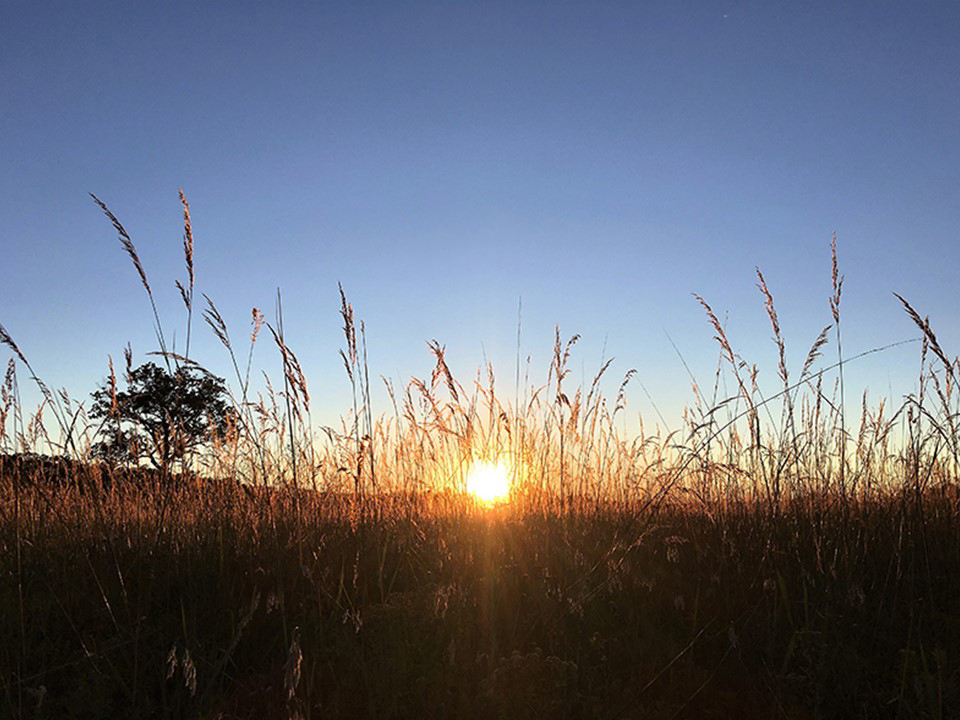
If you plant it, they will eat it. That was one of the findings of a recent study by University of Guelph integrative biology researchers who wanted to find out why their efforts to restore rare species of native prairie tallgrass were failing.
The culprits were primarily deer mice that were eating the prairie tallgrass and flowering plants the researchers planted as part of a 40-acre restoration project at the rare Charitable Research Reserve near Cambridge, Ont.
“We noticed a lot of them were failing and we didn’t know why,” says Prof. Andrew MacDougall, who worked on the study with Prof. Steven Newmaster; Royce Steeves of Fisheries and Oceans Canada; and lead author Stefan Schneider, M.Sc. ’14.
Tallgrass prairie was once plentiful in Ontario, covering about 2,000 square kilometres. Of the 35 species that were planted as part of the study, only 15 were doing well.
The researchers found that for 10 months of the year, the rodents’ diet consisted of 92 per cent non-native plant species. When the tallgrass prairie hit their peak seed production in August and September, the rodents ate these plants almost exclusively.
“I think it’s just preferential,” says MacDougall, explaining that native rodents have been eating native species of prairie plants for thousands of years. “When the seed is available, they’ll eat it.” Some of the native tallgrass species take several years to produce seeds.
For the study, published in the Journal of Applied Ecology, the researchers analyzed the rodents’ diet by collecting scat from live traps every month from winter to summer. Using a centrifuge, they extracted the plant matter and used DNA barcoding to identify what the animals ate.
DNA barcoding, developed by U of G integrative biology professor Paul Hebert, can identify plants and animals using snippets of DNA.
“DNA barcoding was a great tool for unveiling the initial insights in the dietary diversity of rodents,” says Newmaster. He says innovations in molecular diagnostic tools allowed them to estimate the quantity and diversity of plants being eaten, even among mixtures of closely related food species.
Before this tool was available, it was almost impossible to analyse animal diets.
Some of the rodents’ dietary choices were surprising: some of the DNA samples contained cannabis, which is not an unusual plant to find growing in nature reserves, he explains. Other samples contained ornamental pine trees and common residential garden plants.
“Basically they’re living off a whole suite of non-native introduced plants, except for those two critical months when the native plants were setting seed,” says MacDougall.
Non-native plants are not only invasive species, but they also feed mice when other food sources are scarce, boosting their reproduction rate. The researchers found about 25 mice per hectare, which MacDougall says is high.
“Non-native species of plants are everywhere in southern Ontario,” he adds. “Tallgrass prairie is down to about one per cent of where it used to be, so you get this subsidized rodent population with this massive food source.”
A lack of predators is also part of the problem.
The researchers caught native weasels, which prey on mice, but their numbers weren’t high enough to keep the mouse population under control. MacDougall suggests that conservation of predators, including badgers, coyotes, foxes, hawks and owls is key to restoration success.
To test the effect of predators, the researchers planted an enclosed area with native prairie grasses and flowering plants that rodents couldn’t access. “The seedling density inside the fence was packed and outside the fence it was almost none,” says MacDougall.
Planting native species is only one part of the restoration equation, he adds.
“Paying attention to predator conservation on top of plant conservation might be super important. They all seem to work together.”